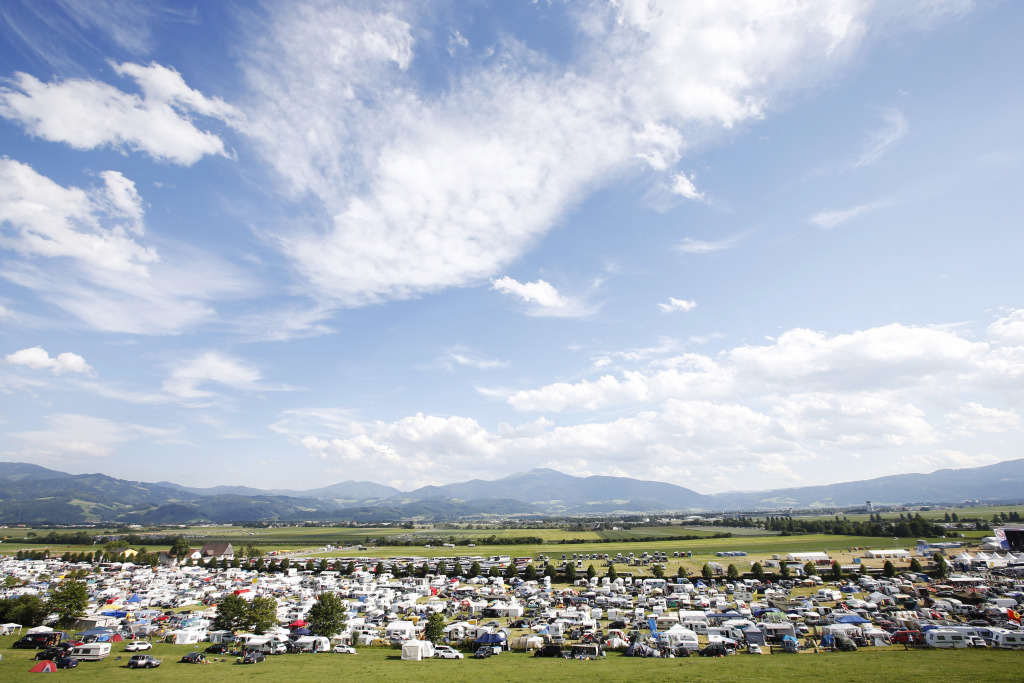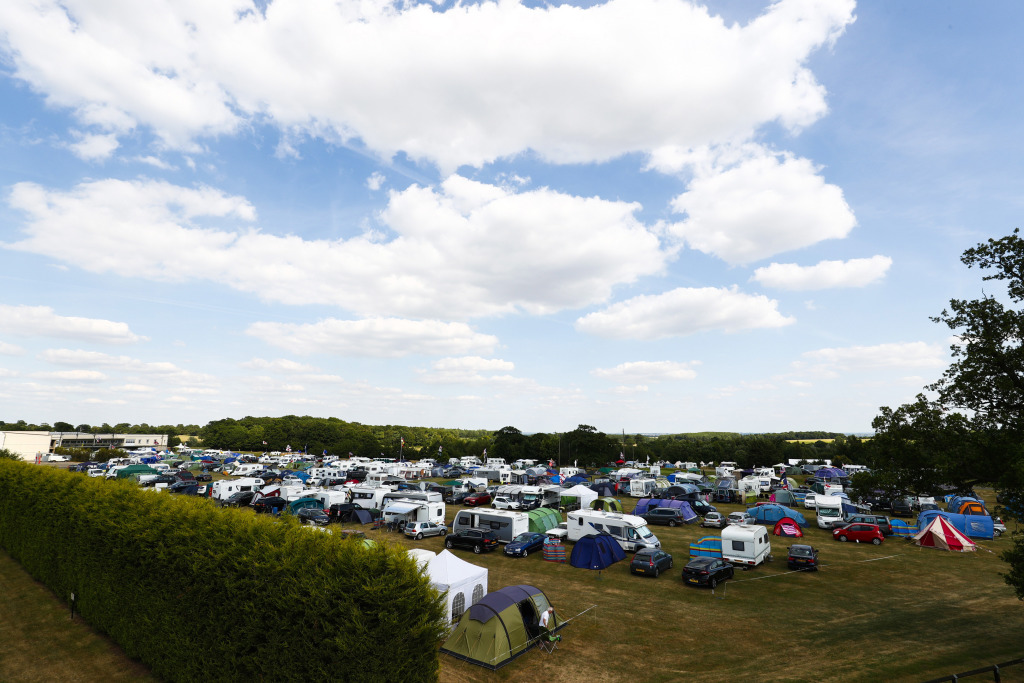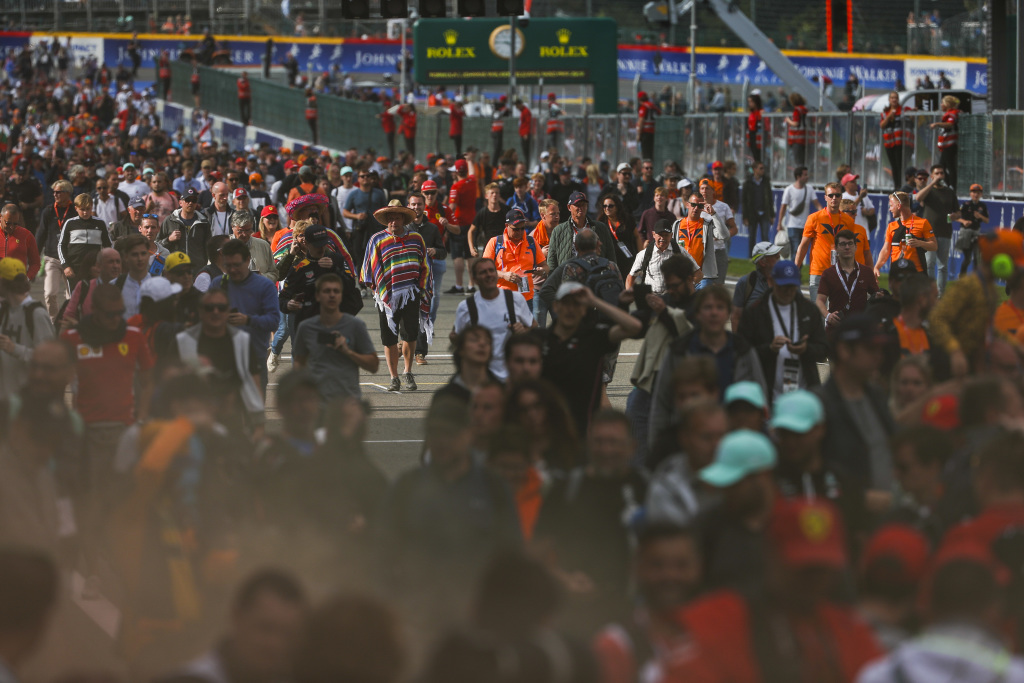
Formula 1 attracts fans from every end of the spectrum. Some will only enjoy the hospitality of fine dining, and five-star hotels. But the beating heart of motorsport is the fans who rough it in the campsite, making new friends with a beer or two along the way.
With the 2022 season on the horizon, we look at five races that are perfect for fans who enjoy camping around Europe.
Remember you can book both race tickets and accommodation options for Formula 1 Grands Prix over on our dedicated F1 series page.

Austria
The Austrian Grand Prix is one of the most popular camping races. Hidden deep in the Styrian mountains, there’s no better way to experience the race at the Red Bull Ring than connecting with the countryside.
But it’s not all that tranquil. One of the most popular campsites in Austria is Camping Pink Premium. A favourite of Max Verstappen’s rowdy Orange Army, this is where you’ll find the party animals. It hosts its own exclusive entertainment with live music and DJs playing all weekend, but also has a large eating area with a variety of food trucks and bars. With access to clean showers, and the option to pitch your own tent or book into a prefabricated cabin.
There are plenty of other camping sites around the Red Bull Ring with official circuit sites dotted around. Here you’ll still find showering facilities, food vans, and other refreshments.

Britain
Renowned as the spiritual home of Formula 1, the British Grand Prix at Silverstone attracts record numbers of fans in excess of 350,000 Naturally, not all of them can book into the Milton Keynes Travelodge.
As the circuit is in rural Northamptonshire, and there is plenty of green space around the complex to accommodate thousands of race fans. With many settling in from the Thursday morning for a summer festival of motorsport, the electric atmosphere is one of the best in the world.
The stunning grounds of Whittlebury Park hosts fans of F1 and MotoGP when the series come to Silverstone. Hundreds of fans take over the grounds for a slice of peace away from the busy circuit camping sites. On-site food trucks and bars keep fans fuelled throughout the weekend, with pre-erected tents available. This site would be perfect for a family looking to enjoy a Grand Prix experience together.
There are also options closer to the circuits, which are a little livelier for fans looking to make the most of the weekend. These are better suited to groups of friends who aren’t afraid of a bit of mud and a bit of noise.

Belgium
Does it get any better than camping in the Ardennes Forest? The Belgian countryside bursts into life every summer as Formula 1 returns after the break.
While Spa-Francorchamps is a huge, all-encompassing track, its surrounding towns are tiny. Spa has a population of a little over 10,000, as does nearby Malmedy. For context, over a quarter of a million spectators descend on the circuit over the race weekend.
Camping is the best option for most fans to stay close to the circuit during the race. There are three camping areas at the track. The ‘Green’ Camping Zone is to the east of the circuit, around the Le Combes and Malmedy corners. The Yellow camping is closer to the track’s main grandstands, just west of La Source. These provide everything you need: camping pitches for your own tents, shower facilities, live music, and the option to book breakfast and dinner during your stay.
The third campsite is the unique Young Village campsite, which caters to fans aged 17 – 27. This campsite is located by the 17 – 27 Grandstand, which is based around a mini festival for young people with DJs in the stand, and alternative live music. For a group of mates attending their first Grand Prix, this is where you want to be.
Hungary
Many fans heading to the Hungaroring will travel in for the race from nearby Budapest. And who could blame them? The capital city is bursting with culture, scenery, and is a damn fun night out.
But for those who would prefer a shorter commute to the circuit (later nights, longer lie-ins…), there are five campsites around the Hungaroring to stay at. All of the campsites are fully equipped with hot water facilities as you would expect, and are available for fans to pitch their own tents.
Families travelling to the race might be taken by the Acqua campsite, which is located at the waterpark. An easy way to keep anyone of any age occupied between race sessions.
France
The French Grand Prix at Circuit Paul Ricard is relatively remote. It is about a 20 minute drive from Saint-Cyr-sur-Mer, and given the beauty of the French countryside, many fans will camp at the track.
While the pitches are relatively basic – you need to turn up with your own tent, and there are no electricity or water connections for campervans – that won’t bother those who spend a week camping around Cote d’Azur for the week or after before the race.